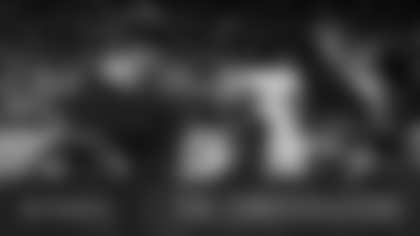Even Tim McGee, a hardened Super Bowl veteran made even harder by his media stints on Cincinnati TV and radio, got swept away by the surging, raging spectacle that filled Paul Brown Stadium the other night.
"I was at the field level and I got to hear the roar on that interception," McGee says of linebacker Germaine Pratt's game-ending interception at the Raiders 2. "You're talking about chills goose-bumping down your spine. Bad knees and all jumping up and down. It's how you want 66,000 to sound."
Meanwhile, McGee's old Bengals teammate, tight end Rodney Holman, No. 82, the man McGee calls "the most underappreciated and underrated player in Bengals history," was far and away from the maddening crowd.
But even he was drawn into the drama when he got a call at his Louisiana home from a co-worker watching highlights. Holman, a Walmart distributor, took the call from Columbus, Ohio, and here was his buddy telling him that a guy wearing his old number had scored the Bengals' first touchdown in their Wild Card win.
When Holman, the three-time Pro Bowler, got to watch the highlights himself, he was able to piece together that after C.J. Uzomah had caught quarterback Joe Burrow's seven-yard third-down touchdown pass, No. 87 met the media wearing Holman's vintage Super Bowl era jersey.
"My daughter was telling me that was their first playoff win since 'Home Alone,'" said Holman, who took her to see Bengals-49ers last month. "I found out he pulled my number. It's (nice). Tell him congratulations."
There have been congratulations all around all week. From Saturday night's Ruler of the Jungle, Queen City icon Ickey Woods, to Seamless Joe Burrow, the Bengals latest franchise quarterback to win a playoff game, Bengaldom soaked in a rare, golden moment when nostalgia met nirvana in a three-hour thunderclap at Paul Brown Stadium.
Anthony Munoz, the greatest Bengal of them all, had heard something like it before.
"But not in that place," Munoz said. "Not that place I haven't. Even the playoff runs we had a few years ago. It didn't compare. This was on a new level."
For the first time, the old Bengals said, the roar at The Paul came close to matching the din of Riverfront Stadium in the 1988 AFC title game that sent them to Super Bowl XXIII.
"The buildings are different. This one is open. It doesn't hold the noise like Riverfront did," McGee said. "But I'll tell you this. There wasn't that much of a difference."
Or as the Pro Bowl cornerback on that Super Bowl team, Eric Thomas, says, "Every bit of it. Every bit of it. I was down there a few years ago when they came back to beat Seattle and it wasn't close. It was pandemonium."
The difference, as Elbert L. "Ickey," Woods will tell you, is they won. Woods warmed up the biggest crowd in Cincinnati's NFL history from the throne of "The Jungle," with the "Ickey Shuffle," the touchdown dance craze that swept the country in '88 and has remained intact through seven presidents, six head coaches, four franchise quarterbacks, two stadiums and an Ocho.
"That's the way it sounds when you win," Woods says. "Very exciting. Very exciting. The crowd was outstanding. The Bengals and the fans have brought Cincinnati back to life."
Woods played just 37 games in four seasons before injury snatched it all away, but he has spent a lifetime giving back to the town that embraced him. So he nodded approvingly when Uzomah celebrated that first score with the Ickey Shuffle.
"I enjoyed it. I loved it. Loved it, paying homage to me," Woods says. "Those guys are exciting to watch. For him to do that, it was just outstanding."
Woods looked around the blanket of orange and black and saw faces from that '90 team that won the old AFC Central. McGee. James Brooks. Ira Hillary. ET.
"I thought it was fantastic," Thomas says of Uzomah's dance. "If you don't understand what you come from, you have no idea where you're going. What a great way to involve the fans. You've got the mothers and fathers who remember the Ickey Shuffle teaching it to the babies and grand babies. It brings everybody together.
"C.J. Uzomah is probably older than most of those guys. He's the elder statesman. He's telling (his teammates), the fans love this stuff. The nostalgia. Why don't we give it to them? The fact he's even aware of it probably means more to me. That's special that he understands it."
McGee gave it an A, too.
"It was a real treat to me," McGee says. "It symbolized the changing of the guard. Out with the old. In with the new. But keeping the heritage and the culture connected."
Solomon Wilcots, a starting safety on that '90 team who has morphed into one of the NFL's top analysts, stayed in the Cincinnati suburbs charting the game on his computer and compiling the nuts and bolts with his keyboard. But he knew this was not a night for data.
"They were paying tribute to the guys that paved the way," Wilcots says.
Like Thomas, who is still Wilcots' workout partner a few days a week in the gym. As Thomas watched Burrow dance on his rehabbed ACL, it was a good time to recall that in 1990 Thomas was probably the first NFL player to tear an ACL and play in the same year.
He got hurt playing basketball in May and back then, that meant he was even a question mark to be ready for 1991 training camp. But with trainers Paul Sparling and Rob Recker making sure he wasn't overdoing it, Thomas shocked the world and was back by Dec. 9, 1990 for the 13th game of the season. It would be a harbinger of 2021, when Burrow fully expected to start training camp despite getting hurt on Nov. 22, 2020.
"I wanted to play," Thomas says. "When you've got a chance to play in the playoffs, you don't want to miss those games. It worked out with the technique we played and what we were asked to do. Especially when we played Houston.
"There was just a lot of running because they played the Run and Shoot. They were in the division, so we had a lot of familiarity with them. (Defensive coordinator) Dick LeBeau defended it as well as anyone. Combination of running man-to-man and zone every now and again."
Before breaking quarterback Oilers quarterback Warren Moon's thumb, they shut down the future Hall-of-Famer's offense in the next-to-last game of the season. Then two weeks later they picked apart backup Cody Carlson in the Wild Card game. Both in the Riverfront din.
"We were in transition," Thomas says. "We had new guys like (rookie) James Francis at linebacker and Carl Carter and Rod Jones at corner and we were trying to figure it out."
They were in transition on offense, too, with Munoz's great offensive line getting chipped away by injury and departures.
"We didn't have the talent we had in years previous, but we had enough to make it because Sam Wyche probably did his best coaching job," McGee says.
And, as Thomas says, "Anytime you've got a quarterback, you've got an opportunity."
And in '90 the Bengals had Boomer Esiason running Wyche's no huddle offense.
"Don't get me wrong. I love Joe Burrow. He's the whole package. He's what I call a five-percenter. Like a Michael Jordan. Those intangibles," McGee says. "But I've got a quarterback. I'll take my quarterback."
McGee's quarterback and Wyche helped pave the way for Burrow and Uzomah. Think back to one of the signature plays of this season.
Head coach Zac Taylor split out Uzomah wide in a tie game and the fourth quarter running down against Jacksonville. The Jags came with that all-out zero blitz and Uzomah famously knew how to run a route he had never run in a game for the game-breaking play because on Fridays Taylor makes sure all the receivers know the plays from all the spots.
Just like in a 1990 game when Holman basically replaced injured wide receiver Eddie Brown with ten catches for 161 yards while McGee added 142 and Brooks 109 more in Esiason's 490-yard record day that stood until Burrow cracked it last month.
"The way our system was designed, everybody had to know every position. There were times I was playing in Rodney's spot at H-Back," McGee says. "That's when it was the transition and tight ends were no longer seen as just an extension of the offensive line and go out for a pass on just third down. The receivers would work the field deep and Rodney would work the middle of the field one-on-one. To Sam and Bruce's (Coslet) credit, they were smart enough to see when they split out Rodney wide, that created mismatches for us and when the defense adjusted, we took advantage of it. He was just too damn strong for corners. You couldn't cover him."
And Holman's blocking? Legendary in an offense that won back-to-back NFL rushing titles in 1988-89 and was in the top five for five straight years.
"Ask Ickey, JB and Harold Green," says McGee of running backs who had a combined five 1,000-yard seasons with Holman doing his thing.
So after looking at the board listing Bengals Pro Bowlers in the team room, no wonder Uzomah went to equipment manager Adam Knollman wondering how he could get the jersey of the last Bengals tight end that won a playoff game.
Holman knows that board. The man that installed it when he was head coach, Marvin Lewis, showed it to him when he was on a visit a few years ago. Tight end Tyler Eifert happened to be there and insisted he knew who Holman was as Lewis grilled him.
This group of guys did an exceptional thing," McGee says. "They knew they had nothing to do with the past. They knew they could eliminate the ghosts of the past writing about the future and the present."
Knollman directed Uzomah up the street to another Cincinnati icon, Koch Sporting Goods, and they got him the Holman jersey.
The original No. 82 has some advice for No. 87.
"Game at a time. Week at a time," Holman says. "Wipe it away and go to the next play. It's the playoffs. They'll be distributing the ball. Teams are going to be looking at No. 1 (Ja'Marr Chase) there. All eligible receivers have to be ready."
Go inside the locker room and field level to celebrate with the Bengals following the 26-19 win over the Las Vegas Raiders in the AFC Wild Card round.
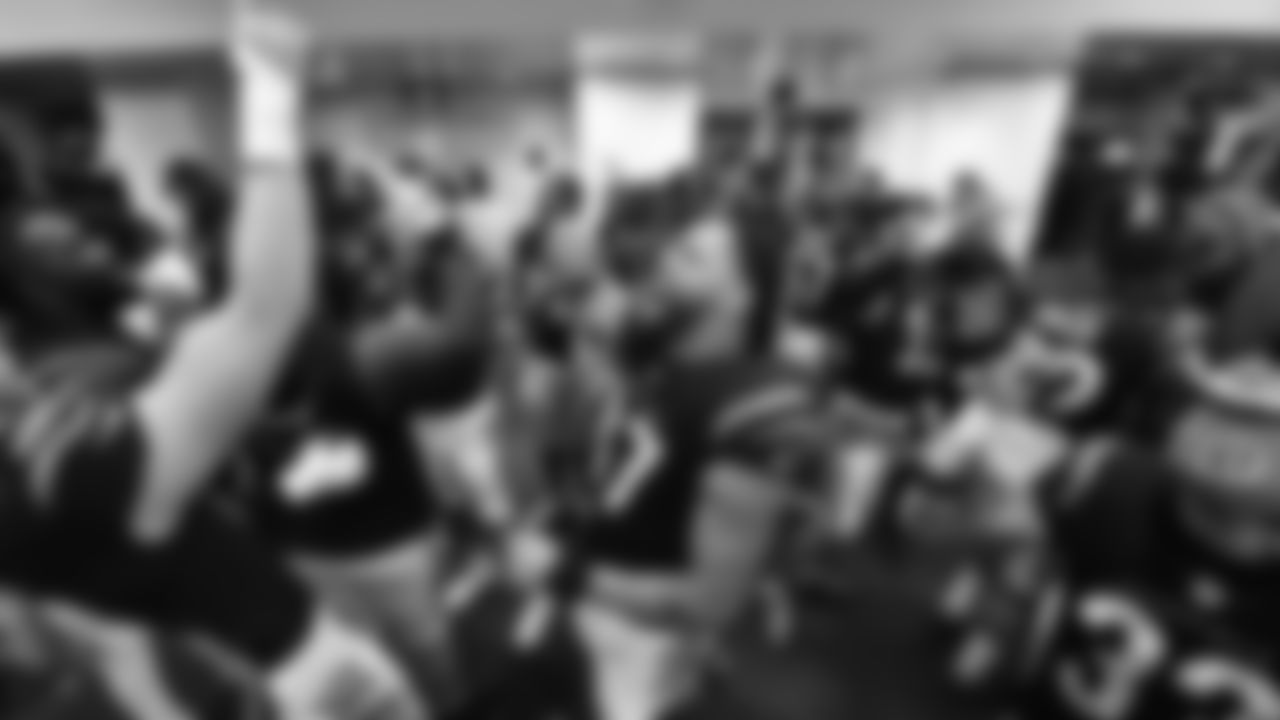
Inside the locker room as the players celebrate following the Bengals 26-19 win over the Las Vegas Raiders in the AFC Wild Card.
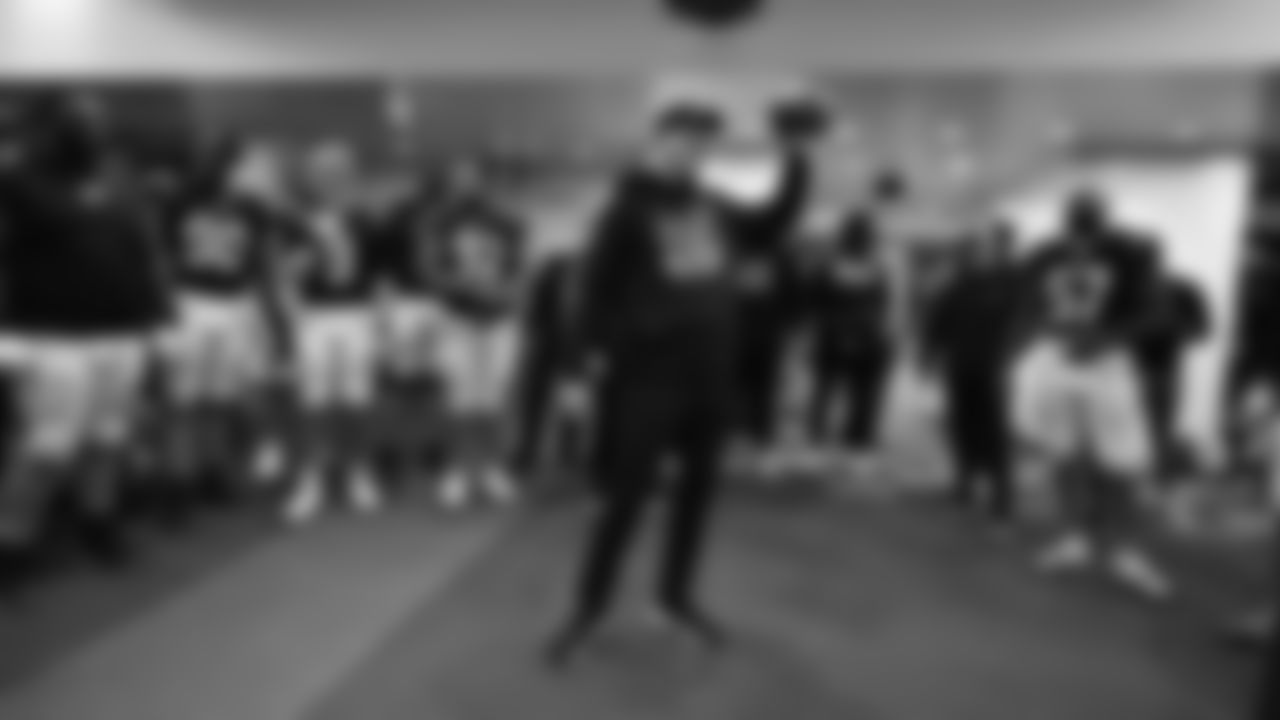
Inside the locker room as head coach Zac Taylor gives out game balls following the Bengals 26-19 win over the Las Vegas Raiders in the AFC Wild Card.
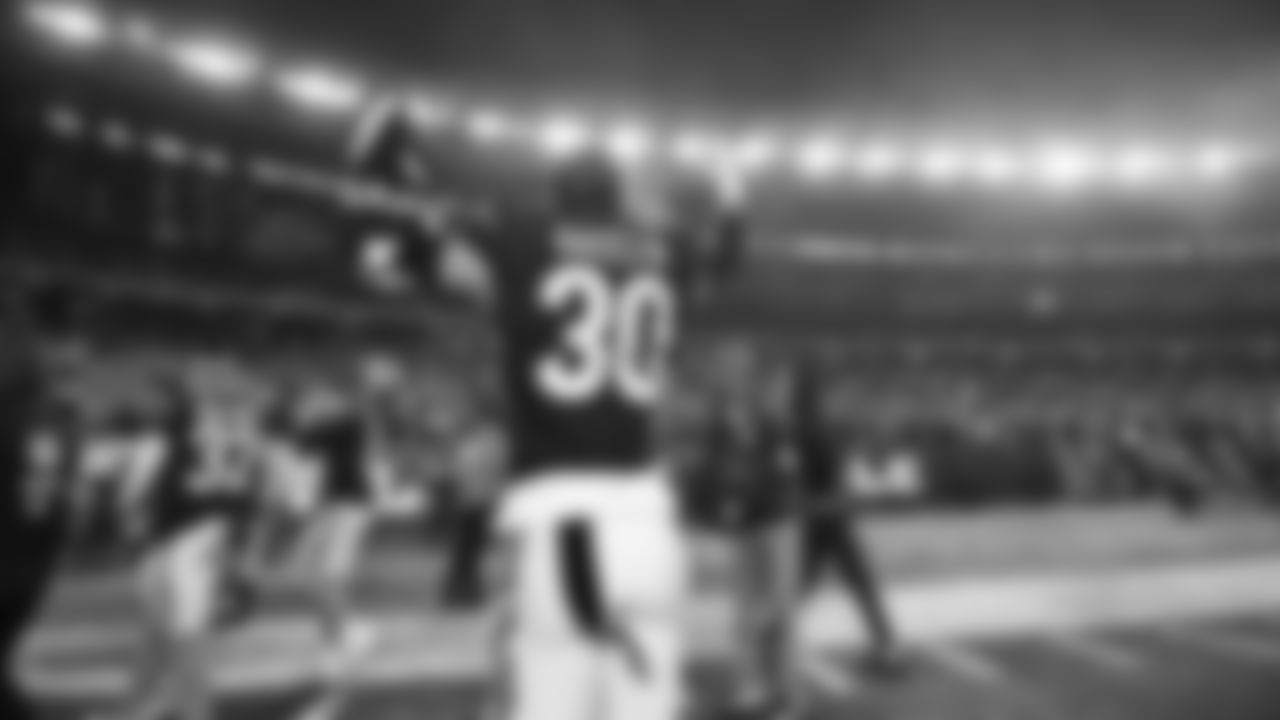
Safety Jessie Bates III pumps up the crowd at Paul Brown Stadium as the Bengals advance in the AFC Playoffs with a 26-19 win over the Las Vegas Raiders in the Wild Card round.
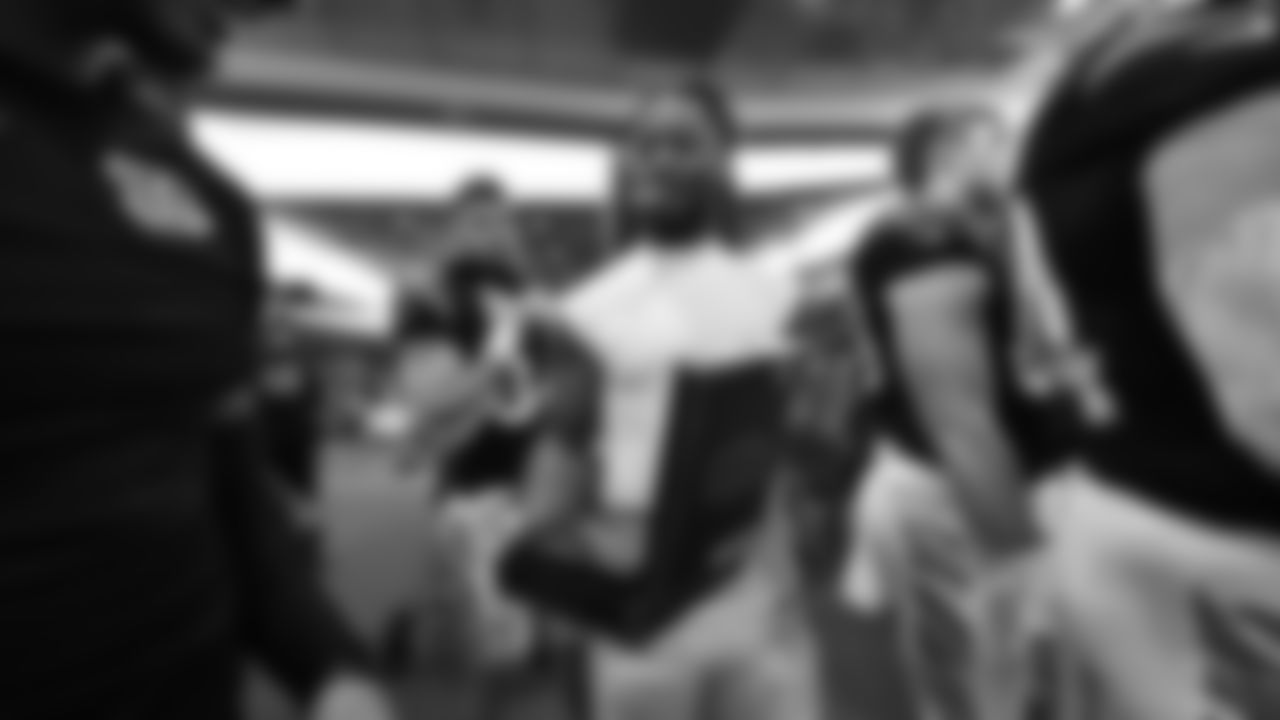
Inside the locker room Joe Mixon hands out cigars to the players as they celebrate following the Bengals 26-19 win over the Las Vegas Raiders in the AFC Wild Card.

Ja'Marr Chase (left) celebrates with fellow receiver Tee Higgins (center) inside the Bengals locker room.

Safety Ricardo Allen hugs quarterback Joe Burrow following the Bengals 26-19 win over the Las Vegas Raiders in the AFC Wild Card game.
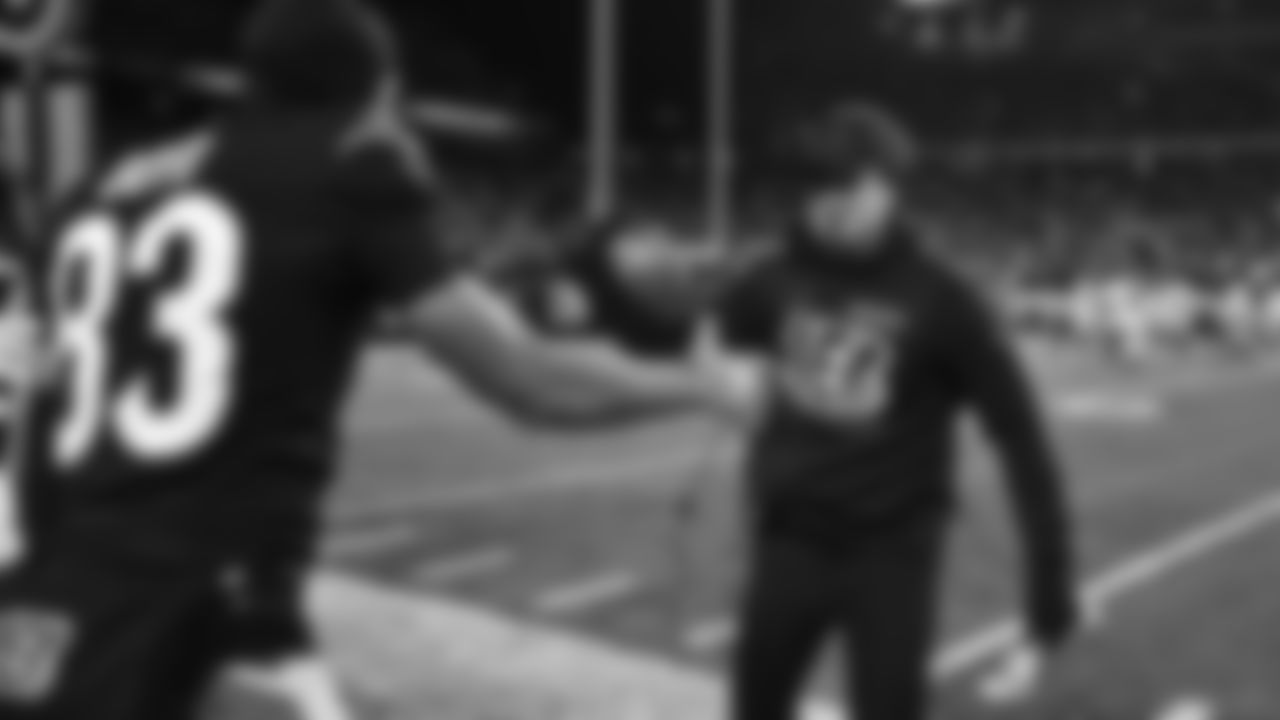
Tyler Boyd congratulates head coach Zac Taylor on the sideline after the Bengals 26-19 win over the Las Vegas Raiders in the AFC Wild Card.

Mike Thomas (left), Joe Burrow (center) and C.J. Uzomah (right) head to the locker room after the Bengals 26-19 win over the Las Vegas Raiders in the AFC Wild Card.

Cincinnati Bengals head coach Zac Taylor walks off the field after a win over the Las Vegas Raiders during an NFL wild-card playoff football game, Saturday, Jan. 15, 2022, in Cincinnati. (AP Photo/Emilee Chinn)
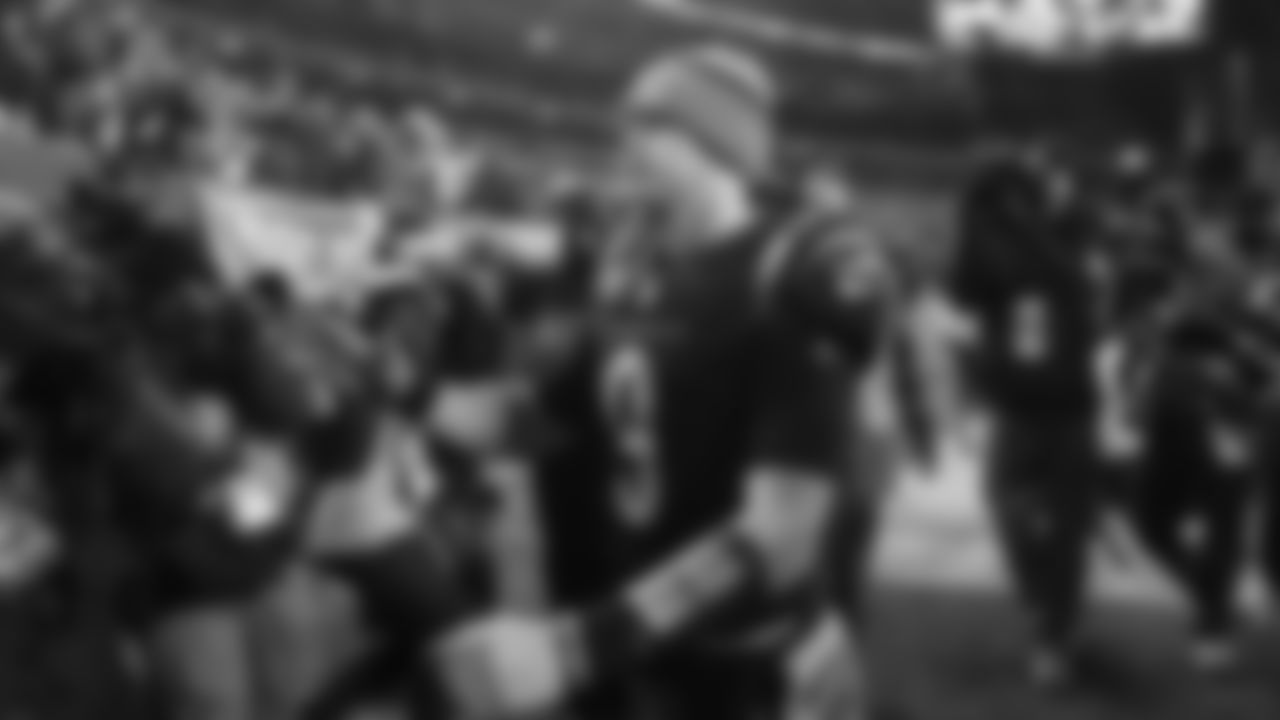
Cincinnati Bengals quarterback Joe Burrow (9) walks off the field after a win over the Las Vegas Raiders during an NFL wild-card playoff football game, Saturday, Jan. 15, 2022, in Cincinnati. (AP Photo/Emilee Chinn)
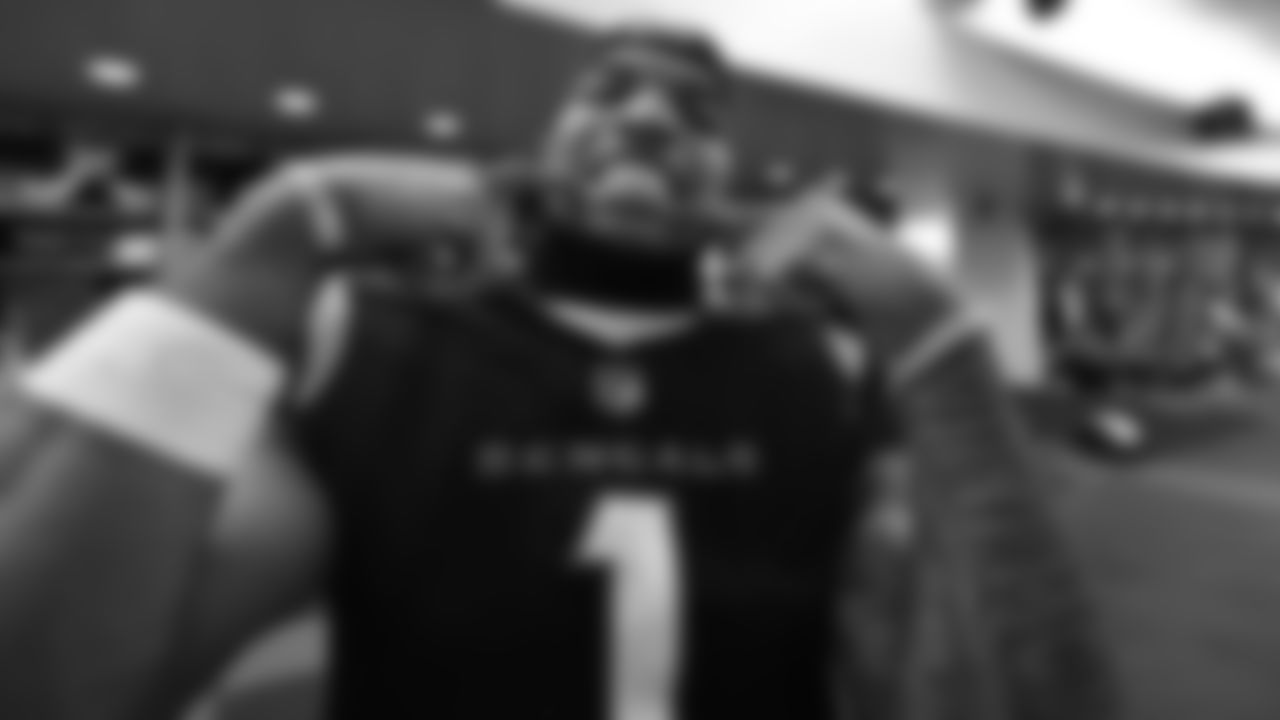
Wide receiver Ja'Marr Chase is all smiles inside the locker room following the Bengals 26-19 win over the Las Vegas Raiders in the AFC Wild Card.
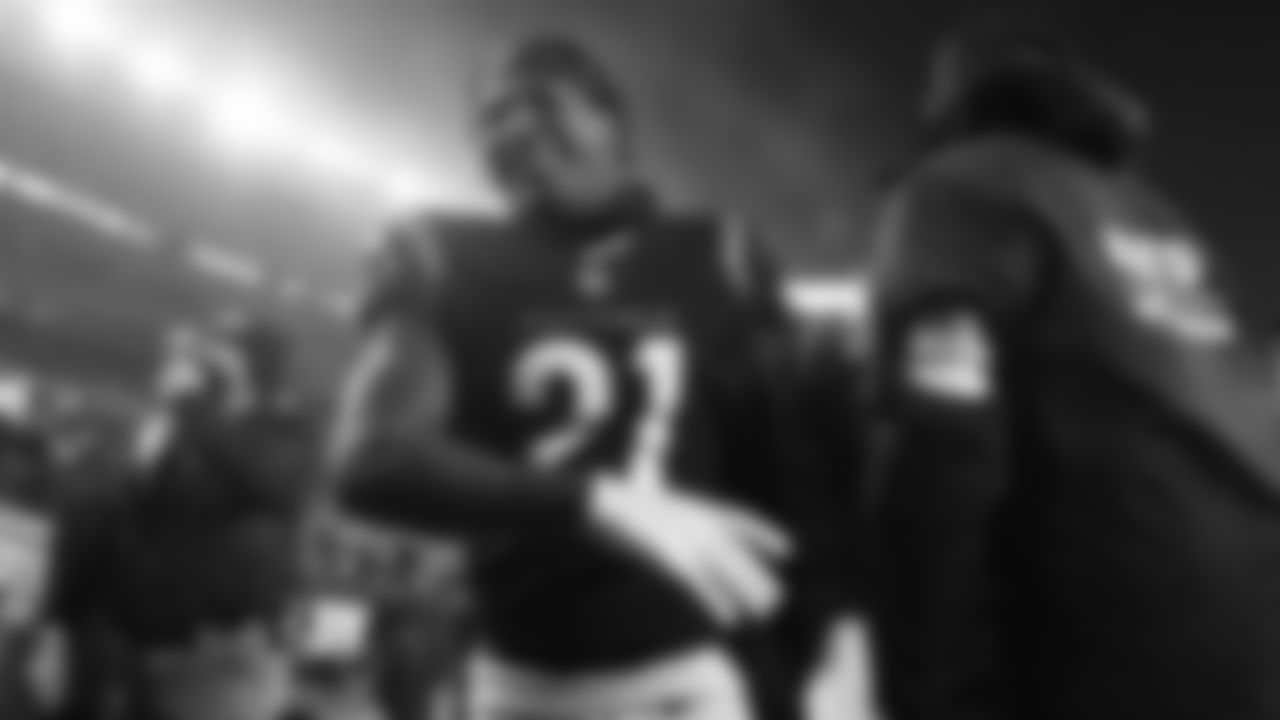
Cincinnati Bengals cornerback Mike Hilton (21) walks off the field after a win over the Las Vegas Raiders during an NFL wild-card playoff football game, Saturday, Jan. 15, 2022, in Cincinnati. (AP Photo/Emilee Chinn)
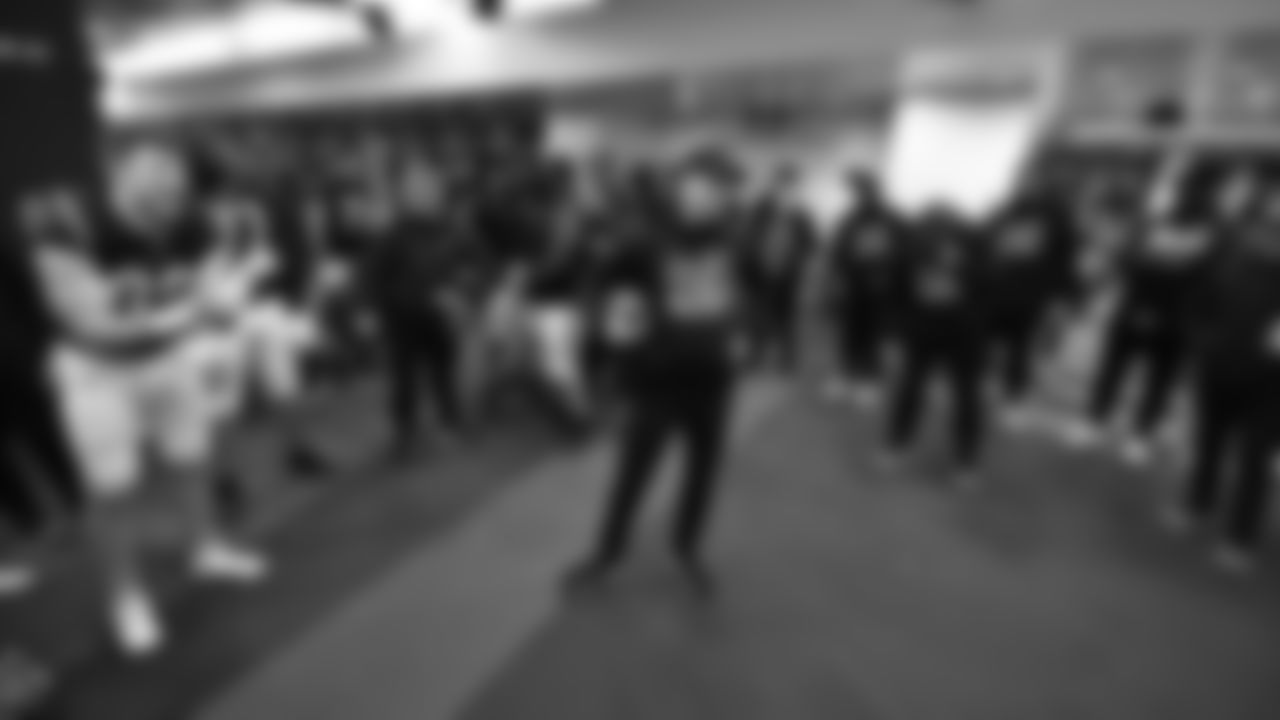
Inside the locker room as head coach Zac Taylor is cheered by his players following the Bengals 26-19 win over the Las Vegas Raiders in the AFC Wild Card.

Quarterback Joe Burrow pumps his fist in the air following the Bengals 26-19 win over the Las Vegas Raiders in the AFC Wild Card.
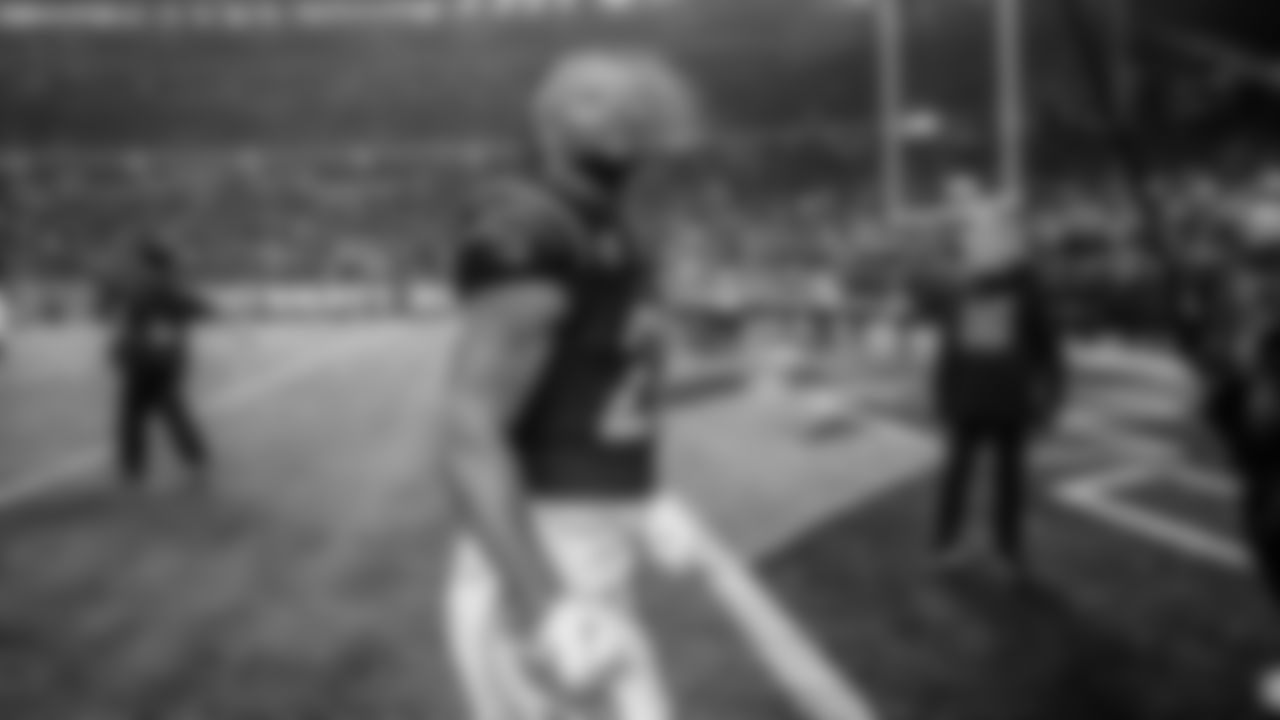
Running back Joe Mixon smiles to the fans as the Bengals win 26-19 over the Las Vegas Raiders in the AFC Wild Card.
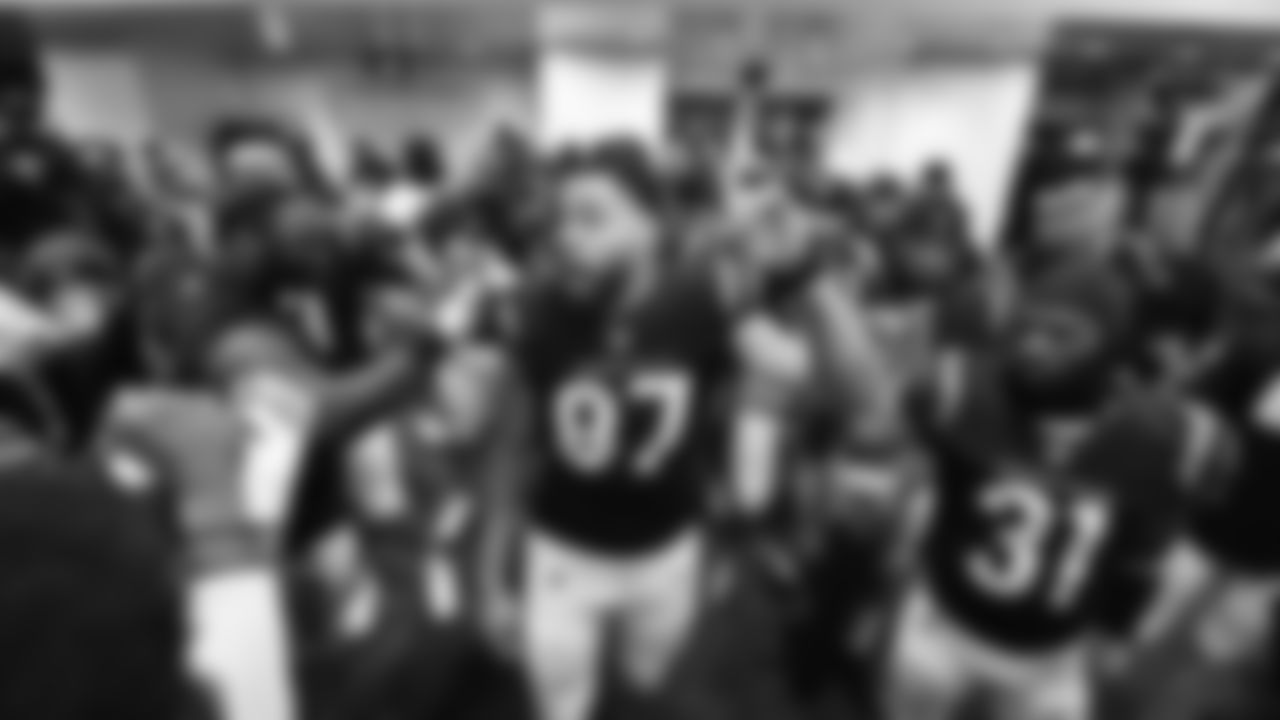
Inside the locker room as the players celebrate following the Bengals 26-19 win over the Las Vegas Raiders in the AFC Wild Card.

Head coach Zac Taylor smiles as fireworks go off in the background at Paul Brown Stadium as the Bengals defeated the Las Vegas Raiders, 26-19, in the AFC Wild Card.






